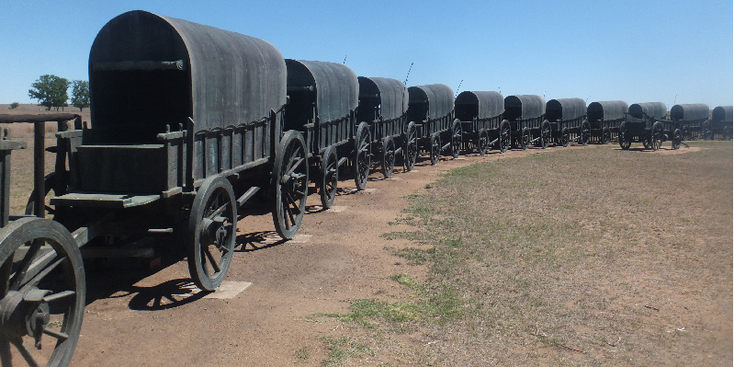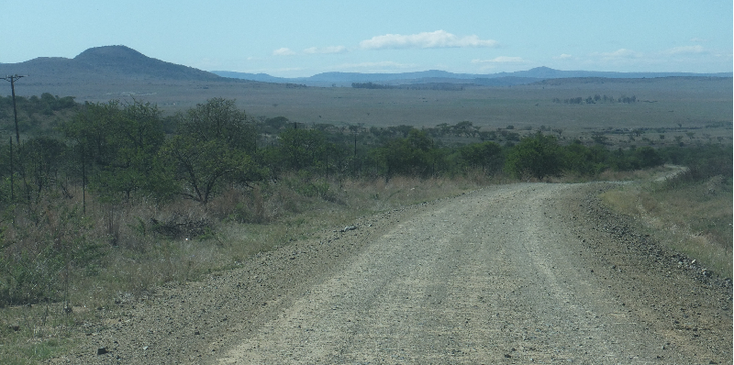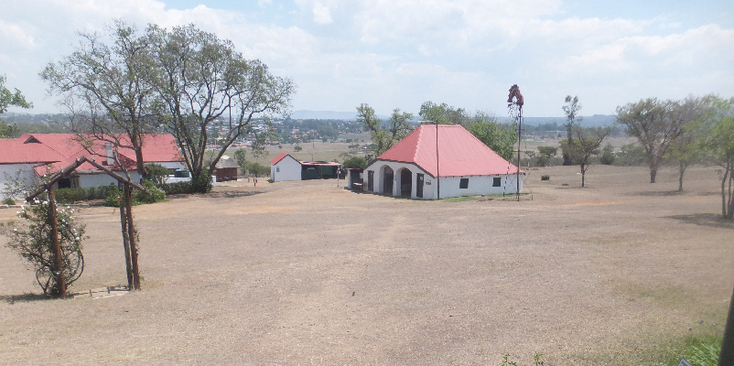Battlefields Kwazula-Natal
Tours - South Africa

introduction
The Farmers moved into Zululand in 1838 for new land for their livestock and a new home – away from the British in the Cape Colony. They naturally came into contact with the Zulus and the Voortrekkers thought it was wise to engage in diplomatic discussions to avoid violence.
Piet Retief and his diplomatic group were slaughtered mercilessly during the negotiations. On December 16th, a small Boer commander group of Voortrekkers retaliated for the cowardly death of the Boer diplomatic group of Piet Retief on the Zulus earlier that year, which resulted in a massacre in which the nearby river colored red with the excessive Zulu blood.
Some 3,000 of the 12,000 warriors were killed. From that time on, the river is called "Blood River". This is one of the examples of battles that took place between the Boers and Zulus. Below is a series of sites that remind you of the battles that took place. Among them are the places that had something to do with the war between the British and the Zulu, followed by war sites representing the two Boer Wars.
boeren (farmers) - zulu battlesites

Valley of the Kings (R34)
In the military camp Mgungundlovu (capital of Dingaan from 1829 to 1838) the Dutch Piet Retief and other prominent (negotiators) Voortrekkers were murdered by the Zulus. This was the occasion of the big Boer-Zulu War in 1838. You can see a memorial of Piet Retief where he’s buried.
This valley lies on the road from Melmoth in the direction of Freedom (R34), a few kilometers after crossing Ulundi a sign follows where you leave the road. Then it is another 5 kilometers to the actual site. This site can not be reached by public transport.
Slaughter of Blauwkrans (Colenso) and Saailager (Estcourt)After the king had murdered the Boer delegation (see Valley of the Kings), an attack was also made on the Boers in Blauwkrans, with many victims on the Boeren side.

Battle of blood river
Here you will find the blood river monument which consists of a life-size monument of 64 bronze ox-wagons (covered wagons that together form a defensive-circle). In the middle the cavalry was ready to go behind the "door" (a car that was at right angles to the rest) behind fleeing enemies.
The wagons in the middle served for ammunition waepons and supplies. In the middle is now a pile of stones - this was the first monument of the battle. In 1866, about 45 wagons from Boeren came together when suddenly Zulu's appeared. They did not come to fight, but to pay homage to the fallen warriors with the Boers. This monument is unique in the world.
There is also a museum (blood river museum) present with a large granite ox-wagen that stands for the Voortrekker houses, its defenses and its church. The site houses a hostel, restaurant and a place to see the film (15 or 45 minutes) about the battle . Finally, there is the Ncome museum (on the other side of the river) which highlights of the Zulu side of the story that turns out to be different from the Farmers story.
The building is placed in the shape of a buffalo head which represents the Zulu method of attack. The main thrust of the attack in the centre and the horns as side-attack with young warriors as the defending army falls apart. On the side hang metal shields that must represent the Zulu regiments. A donation at this museum is required. Blood river lies between the town Nondweni and the parallel road R33 (Freedom and Dundee) on a gravel road. You can not come here without your own car.
Entrance fee: 50R
Website: www.voortrekkermon.org.za and www.bloedrivier.org
Other forts, battlefields etc. (1838):
Opathe (R66) and Ulundi.

introduction
The British increasingly saw the aggressive Zulus as a threat to Natal as the Cape Colony both politically and economically and preferred to end it by force. After some incidents occured in which Zulus came to British territory, among others, the British asked for clarification.
Due to diplomatic shifting and miscommunication (probably deliberately), the Zulu king was called upon and had to be accountable (it was no longer a request but a demand). The king did not respond to their demands, let the deadline pass when the English declared war. This was the beginning of some cruel battles between the British and the Zulu’s.
british - zulu-battlesites

Estcourt, Helpmekaar and Battle for Rorke's Drift / Fugutive Drift
Fort Durnford was built in Estcourt in 1874 to protect the city against Zulu attacks. Fort Durnford is now a museum. During the war, the small town of Helpmekaar was a base camp for British troops (see also 2nd Boer War). At Rorke's Drift a visitor center is present on the site. A little further you can see a memorial of Fugutive Drift.
Two English soldiers tried to secure the English flag and were killed by the Zulus. Rorke's Drift is about 45 km southeast of Dundee. You can reach the site via the R33 or R66. The site of Fugitive Drift is 10 km further than Rorke's Drift. The roads to it are dusty and narrow.
Entrance: 30R
Brochure: The Rorke's Drift-Shiyane Self-Guided Trail (R3).
Battle of Isandlwana
There is a visitor center on the site including a small museum. On the battlefield itself are several memorials and other signs where, among others, English soldiers have fallen in battle. You can reach Isandlwana via Dundee; it is 70 km southeast of the R66. The road is narrow and dusty.
Entrance: 30R.

Fort Mthonjaneni (Melmoth)
Although no major military operations were carried out around the city of Melmoth. For the British and Zulu command this town turned out to be strategically important The Zulu-army, which caused the slaughter of Isandwlana a few days later to the British, passed this point on 17 and 18 January 1879.
When the British invaded Chelmsford Zululand for the second time in the summer of 1879, many small fortifications were made. Around the valley of "Mthonjaneni" some defense works were set up on both sides. This was used as a weapon and stockdepot while another part was put up as a British headquarters.
Nondweni
In order to increase his prestige and thus increase the chances of the throne, Eugène Bonaparte, son of Emperor Napoleon III of the French, was encouraged to take part in the English expedition to Zululand in February 1879. There he went on an exploration against the Zulus. He was ambushed and killed by 18 javelins (spears) at Nondweni. This meant the end of the entire Napoleon dynasty.
There is a Royal Prince monument here in memory of Eugene Bonaparte. This monument stands along a gravel road between Liberty and Mangeni and to my knowledge it can not be reached by public transport.

Battle of Nyezane and Gingindlovu (R34 / 66)
One of the battles in which the British just about won from the Zulus was the battle of Nyezane. A granite memorial stands there as a reminder. Around the first of April 1879 - at Gingindlovu, Chelmsford had his entire army lined up on a low hill in a square.
With 10,000 men attacked the impi's. The horns of the bull (strategic attack from the Zulu’s) surrounded the square and the Zulu main force attacked head-on. The combination of Gatling Gun and rifle bursts, however, brought the Zulus back to a standstill. When the Zulus left, they left behind more than 1,000 deaths. Chelmsford and Pearson retreated together in Natal. It seemed as if the outcome of the battles had ended in a 'draw'.
Ulundi / Ondini
This was ancient Zulu king Cetswayo's capital founded in 1873 which was totally destroyed during the British Zulu wars. The Royal kraal (fortress) has been rebuilt. You can also visit the archaeological sites. A little further there stands a memorial of the last slaughter in the war. After this battle the British annexed Zululand; here is also the KwaZulu Cultural History Museum. Once a year (like in Swaziland) a big Reed dance is held with thousands of Zulus in their traditional clothing and attributes here.
Other forts, battlefields etc. (1879):
-
Fort Chelsmford (R102)
-
Gordon memorial (R33) (Pomeroy)
-
Hlobane (R69) (Ehlobane)
-
Kambula (R33) (Freedom)

introduction
The Boers were still under constant pressure from the British in their new region in the north of South Africa. That new country was quickly annexed by the British in 1877, supposedly because the whites needed protection for attacking black tribe attacks from the far north. The Farmers rebelled and declared the English war. After a few targeted attacks on the overwhelmed British, the Boers got their own republics. Until 1899 it remained reasonably quiet.
Then gold was found in Transvaal and a stream of Englishmen,fortune-seekers, blacks and other foreigners came into the area. The Boeren that just wanted to live a peaceful quite life were not amused. Their rights were curtailed, and old President Paul Kruger preferred to throw them all out of the country. It got so out of hand that the English troops pulled together at the borders of the two new Boer republics on which they again declared war on England. After the first blows, thousands of English soldiers and war material were shipped to South Africa.
Arms that the Boers didn’t have. After two years of guerrilla battle they gave up. The new South African union was established, including the two old farmers' republics.Here you can read about the most famous, fierce battlegrounds of the two Boeren-wars that took place.
farmers (boeren) - british battle-sites

Newcastle
Fort Amiel was built in 1876 in Newcastle by the Britsht after threat of the coming Boeren Wars. The fort is now a museum about both the British - Zulu war and the Boeren Wars. Curator Louis can tell you everything about the history of the fort.
Admission: free
Website: www.amajubaexperience.co.za
Battle for Laing's Neck
At the battle of Bronkhorstspruit, the British were defeated in the opening battle of the first Boeren-war. The British general George Pomeroy Colley marched from Natal to Transvaal. At the Laingsnek mountain pass the two armies met on 28 January 1881.
Under the leadership of Commander General Petrus Jacobus Joubert the British were again beaten with heavy losses.
Battle for Schuinshoogte (Schulashoogte) and Majuba hill:
On 8 February 1881 the British regiment of George Pomeroy Colley was surrounded by Boer soldiers. In the following battle (the battle at iNgogo or Schuinshoogte), the Boeren had success because of their camouflaged clothes.
The British wore still their bright red coats. The battle was eventually interrupted by heavy rainfall. Colley's troops fled over the Ingogo River at the expense of some drowning men. Once again, the Boers won a battle with only a few losses.
In Neils cottage, which was used during the battle as a hospital, peace talks took place after the battle. This is at the foot of the hill. Majuba hill (and Neil's cottage - where the peace talks took place) are about 40 kilometers north of Newcastle and Volksrust. The sites are a part of the N11 road and are, to my knowledge, not accessible by public transport.
Entrance: 30R (car).

Battlefield of Talana (Dundee) (October 20) - 2nd BOEREN WAR
This first battle of the 2nd Boeren War led to the encirclement of the Boeren of the vilage of Ladysmith. You can see a number of memorials and historic buildings in which, among other things, photographs and information can be found about the battle in general and the battle for Talan in particular. Here is also a picture of a young Mathatma Ghandi as a wounded carrier during the battle.
Curator Pam McFadden is present for the necessary face-to-face information. This site is located about 1.5 km south of Dundee (in the direction of Freedom) and can be reached on foot.
Entrance fee: 15R
Website: www.talana.co.za


Estcourt and battlefield of Elandlaagte (October 21, 1899)
In the beginning of the war (in 1899) the young war correspondent Winston Churchill was captured by the Boers a little north of Estcourt (near Frere) when he rode in an armored British train. Here is a small memorial. This site is 16 km north of Estcourt where the R103 and R74 meet.
For the British, it was important to keep the railway open between Dundee and Ladysmith to continue to manouvre troops and supplies. This road also had to be kept open in case of a withdrawal of British troops. This battle led to the encirclement of the Ladysmith peasants. On the hills around Elandlaagte are a number of memorials placed for the fallen of the battle. There are also two cemeteries.
Ladysmith
This meaningless town became world news when it was surrounded for no less than 118 days by the Boeren during the 2nd Boer War. The current museum of encirclement, built in 1884, was used during the siege as storage by the English.
Entrance: 10R.

Battlefield of Colenso, Spioenkop and HelpMekaar:
On 15 December 1899 one of the greatest blows between the Boeren and the English in the region was fought at this town. Then it was the base from which the British wanted to break through the encirclement of Ladysmith. There is a museum (ask the key at Mrs Louw from the Battlefield Hotel) and some monuments that remind you of the battle. Also in the surrounding region are several monuments of the winning army of the Boeren that beat the exhausted English.
The battle of Spioenkop was fought on 23 and 24 January 1900 when the British army tried for the second time to undo the encirclement of Ladysmith.
The hill was abandoned by both armies during the night and the Boeren were back first to make up their mistake. There are at least two memorials. To drive to the battlefield of Spioenkop you first have to go to the R616 (not the R600) in the direction of Bergville). Follow the signs.
The battle for HelpMekaar was fought between 13 and 15 May 1900 and caused a relapse of the Boeren. They moved away from the Biggar Hill where their main defense was located. Because of this, the encirclement of Dundee could be broken. You can still see parts of the fortress that the Boeren took here at the top of the hill.
Other forts, battlefields etc. (1899 t / m 1902):
- Willow Grange (1899) (R103)
- Nickolson's Neck (1899) ((R103) (Ladysmith)
-
Rietfontein (1899) (R103) (Ladysmith)
-
Lombardskop (1899) (N11) (Ladysmith)
-
Wagon Hill (1900 (N11) (Ladysmith)
-
Scheepers (1900) (R33) (Freedom)
-
Hart's Hill (1900) (Colenso)
-
Vaalkrans (1900) (R600) (Ladysmith)
-
Blood River Gate (1901) (R34) (Freedom)
-
Fort Prospect (1901) (R66) (Babanango)
-
Ithala (1901) (R66) (Babanango)

see also:
LANDEN:
EUROPA:
Albanië * België * Bosnië-Herzegovina * Bulgarije * Denemarken * Duitsland * Engeland * Estland * Finland * Frankrijk * Griekenland * Hongarije * (Noord) Ierland * Italië * Kosovo * Kroatië * Letland * Litouwen * Luxemburg * Macedonië * Malta * Montenegro * NEDERLAND * Oekraïne * Oostenrijk * Polen * Portugal * Roemenië * Rusland * Schotland * Servië * Slovenië * Slowakije * Spanje * Tsjechië * Turkije * Zweden
NOORD EN CENTRAAL-AMERIKA:
Chili * Costa Rica * Cuba * Guatemala * Mexico * Nicaragua * Panama * Verenigde Staten
ZUID-AMERIKA:
Argentinië * Bolivia * Brazilië * Colombia * Ecuador * Peru
AFRIKA:
Botswana * Burkina Faso * Egypte * Ethiopië * Ghana * Kenia * Mali * Marokko * Namibië * Oeganda * Senegal * Tanzania * Tunesië * Zuid-Afrika
MIDDEN-OOSTEN:
Iran * Israël * Jordanië * V.A.E.
AZIE:
Armenië * Cambodja * China * Filipijnen * Georgië * India * Indonesië * Japan * Kirgizië * Laos * Maleisië * Mongolië * Myanmar * Nepal * Oezbekistan * Singapore * Sri Lanka * Thailand * Vietnam
OCEANIE:
Voor meer reisfoto's kijk op www.instagram.com/cheapskatetravel.nl:
© Cheapskatetravel.nl; 2018 (all rights reserved)


